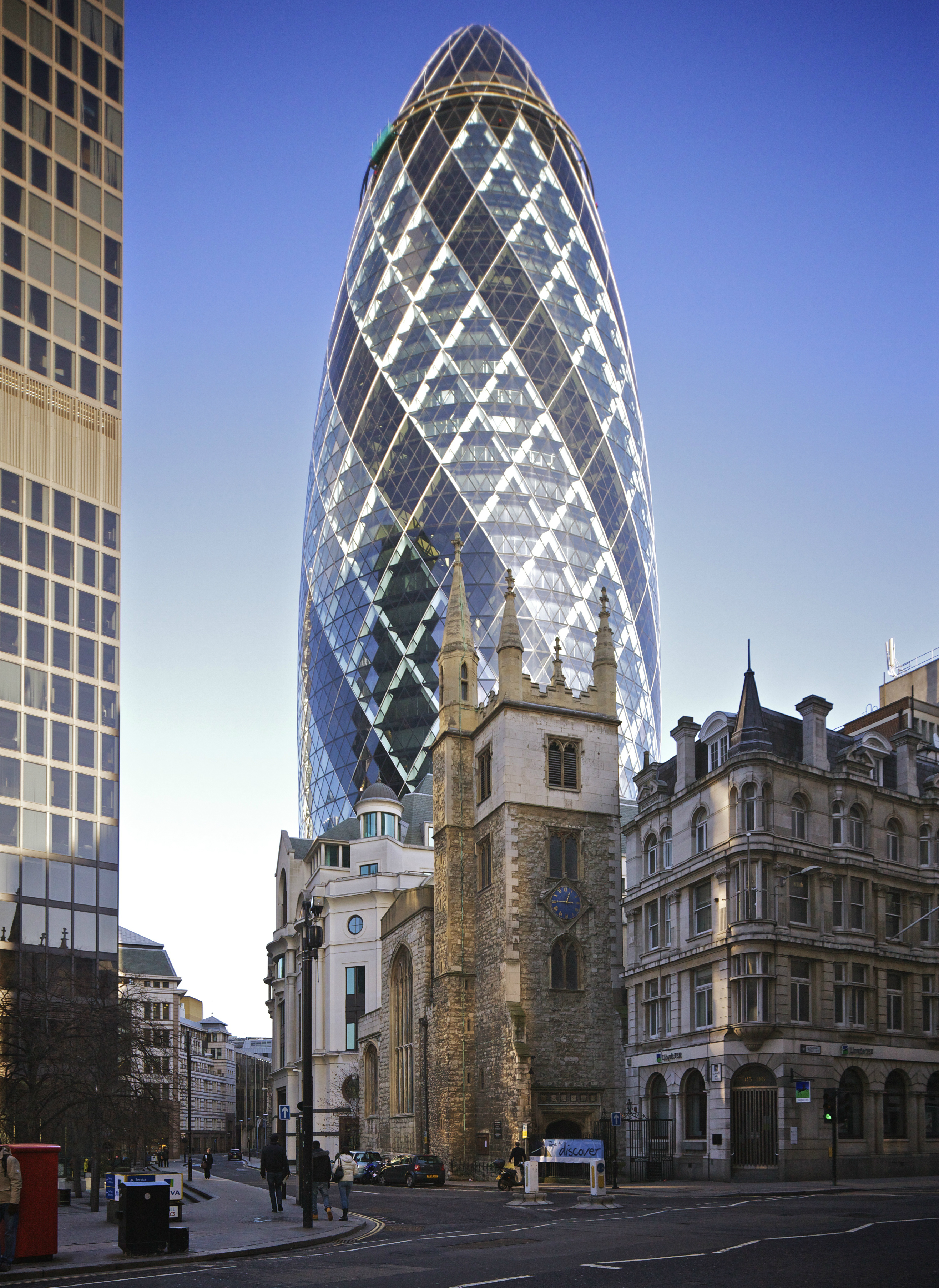St Mary Axe on:
[Wikipedia]
[Google]
[Amazon]
 St Mary Axe was a medieval parish in the
St Mary Axe was a medieval parish in the ''The Gentleman's Magazine'', Vol. 193 (1853), p. 49
/ref> The street St Mary Axe is now most notable for the
 St Mary Axe was a medieval parish in the
St Mary Axe was a medieval parish in the City of London
The City of London is a city, ceremonial county and local government district that contains the historic centre and constitutes, alongside Canary Wharf, the primary central business district (CBD) of London. It constituted most of London f ...
whose name survives as that of the street which formerly occupied it. The Church of St Mary Axe was demolished in 1561 and its parish united with that of St Andrew Undershaft, which is situated on the corner of St Mary Axe and Leadenhall Street
__NOTOC__
Leadenhall Street () is a street in the City of London. It is about and links Cornhill in the west to Aldgate in the east. It was formerly the start of the A11 road from London to Norwich, but that route now starts further east at ...
. The site of the former church is now occupied by Fitzwilliam House, a fact acknowledged by a blue plaque
A blue plaque is a permanent sign installed in a public place in the United Kingdom and elsewhere to commemorate a link between that location and a famous person, event, or former building on the site, serving as a historical marker. The term ...
on the building's façade. Nearby parishes include the medieval Great St Helen's (1210) and St Ethelburga (14th century).
The street name may derive from a combination of the church dedicated to the Virgin Mary
Mary; arc, ܡܪܝܡ, translit=Mariam; ar, مريم, translit=Maryam; grc, Μαρία, translit=María; la, Maria; cop, Ⲙⲁⲣⲓⲁ, translit=Maria was a first-century Jewish woman of Nazareth, the wife of Joseph and the mother of ...
and a neighbouring tavern which prominently displayed a sign with an image of an axe
An axe ( sometimes ax in American English; see spelling differences) is an implement that has been used for millennia to shape, split and cut wood, to harvest timber, as a weapon, and as a ceremonial or heraldic symbol. The axe has ma ...
, or simply from the church name itself, which may have come from the axes used by the Worshipful Company of Skinners
The Worshipful Company of Skinners (known as The Skinners' Company) is one of the Livery Companies of the City of London. It was originally an association of those engaged in the trade of skins and furs. It was granted Royal Charter in 1327 ...
, who were patrons. The sign of an axe is reported to have been present over the east end of the church./ref> The street St Mary Axe is now most notable for the
Baltic Exchange
The Baltic Exchange (incorporated as The Baltic Exchange Limited) is a membership organisation for the maritime industry, and freight market information provider for the trading and settlement of physical and derivative contracts. It was locate ...
at No. 38, and the "Gherkin" at No. 30, a distinctively shaped skyscraper built on the site of the former buildings of the Baltic Exchange
The Baltic Exchange (incorporated as The Baltic Exchange Limited) is a membership organisation for the maritime industry, and freight market information provider for the trading and settlement of physical and derivative contracts. It was locate ...
and the UK Chamber of Shipping (destroyed by an IRA bomb in 1992). The street originates at its northern end as a turn off Houndsditch, with traffic flowing one-way southbound, and it originates at its southern end as a turn off Leadenhall Street, with traffic flowing one-way northbound. Both one-way portions of St Mary Axe converge at Bevis Marks, where traffic is forced westward into Camomile Street
Camomile Street is a short street in the City of London, the financial and historic centre of London.
Description
It is a westward continuation of Bevis Marks, linking that street to Houndsditch (via Outwich Street) and a junction with Bisho ...
.
''Number 70 St Mary Axe'' appears in several novels by the British author Tom Holt
Thomas Charles Louis Holt (born 13 September 1961) is a British novelist. In addition to fiction published under his own name, he writes fantasy under the pseudonym K. J. Parker.
Biography
Holt was born in London, the son of novelist Hazel H ...
as the address of a firm of sorcerers headed by J. W. Wells. This is itself a reference to Gilbert and Sullivan
Gilbert and Sullivan was a Victorian era, Victorian-era theatrical partnership of the dramatist W. S. Gilbert (1836–1911) and the composer Arthur Sullivan (1842–1900), who jointly created fourteen comic operas between 1871 and 1896, of which ...
's ''The Sorcerer
''The Sorcerer'' is a two-act comic opera, with a libretto by W. S. Gilbert and music by Arthur Sullivan. It was the British duo's third operatic collaboration. The plot of ''The Sorcerer'' is based on a Christmas story, ''An Elixir of Love ...
''. In the song "My Name Is John Wellington Wells", the lyric renders his address as "Number Seventy, Simmery Axe"; this reflects the fact that some Londoners pronounce the street's name as "S'M'ry Axe" rather than enunciating it fully. The Tom Holt novels and ''The Sorcerer'' were written before the current office building at 70 St Mary Axe was constructed.
References
*Ann Saunders, ''The Art and Architecture of London: An Illustrated Guide'' (Oxford: Phaidon, 1984), 80. {{coord, 51.5144, -0.0810, display=title, region:GB_scale:2000 Streets in the City of London History of local government in London (pre-1855) Former buildings and structures in the City of London